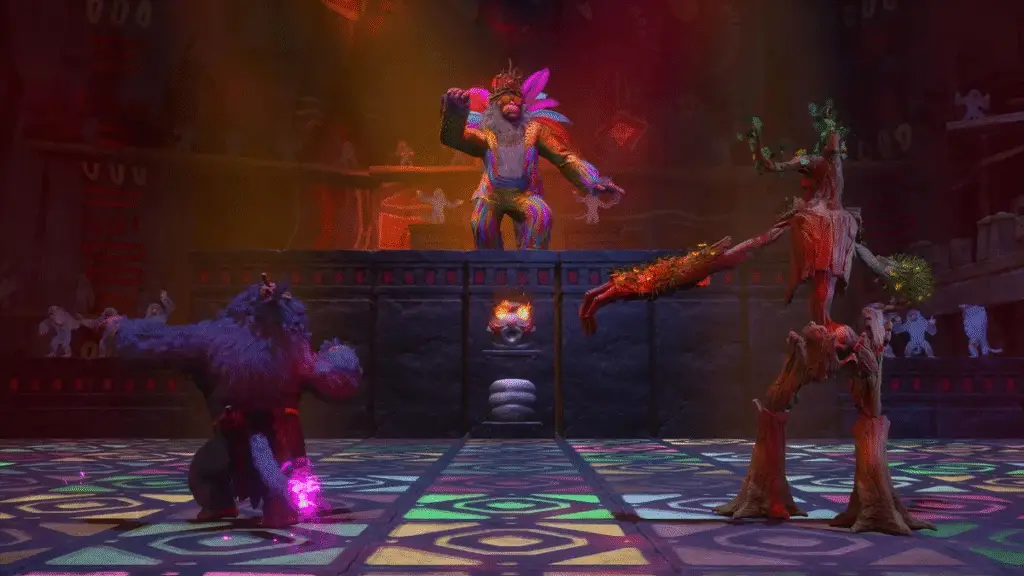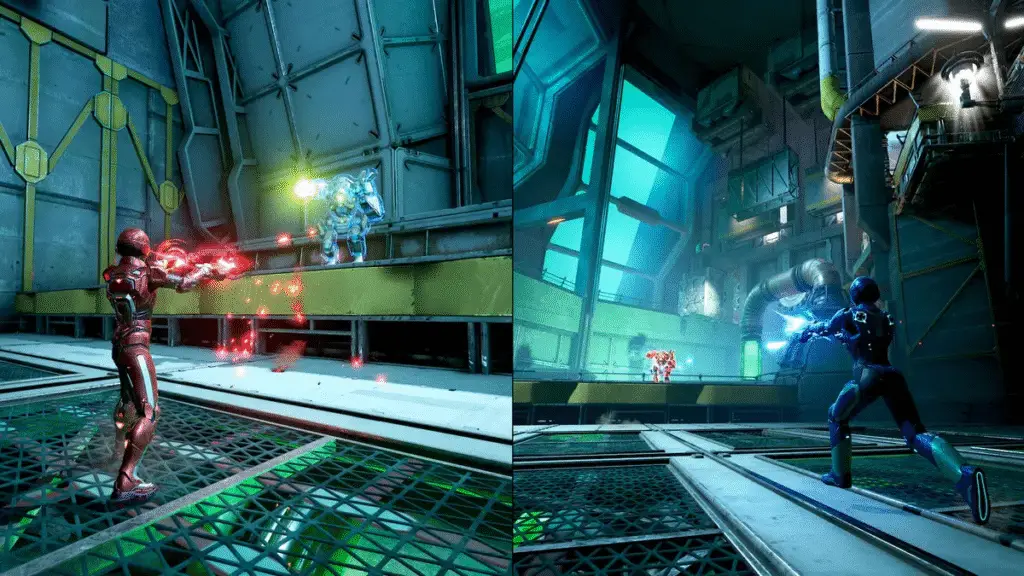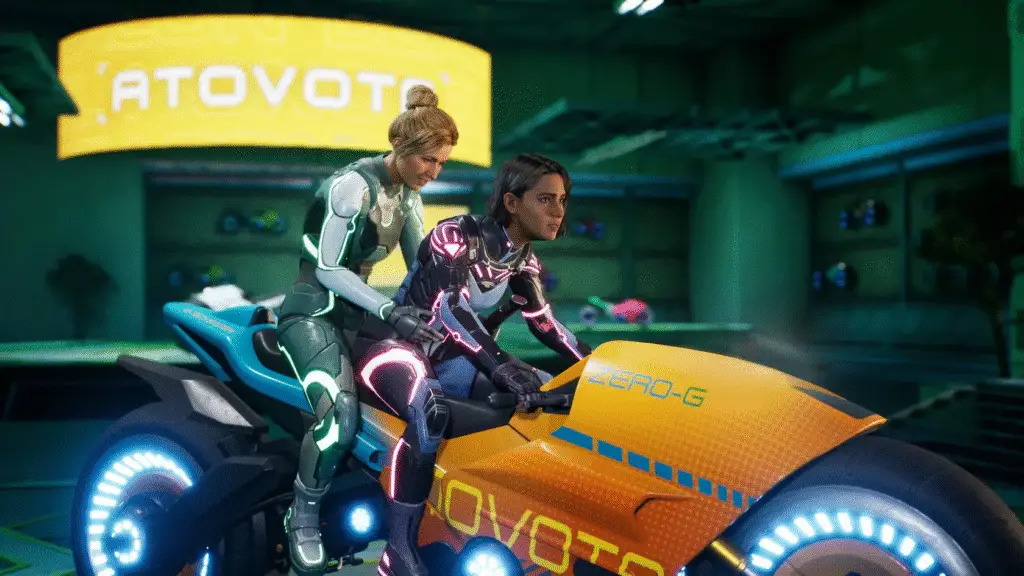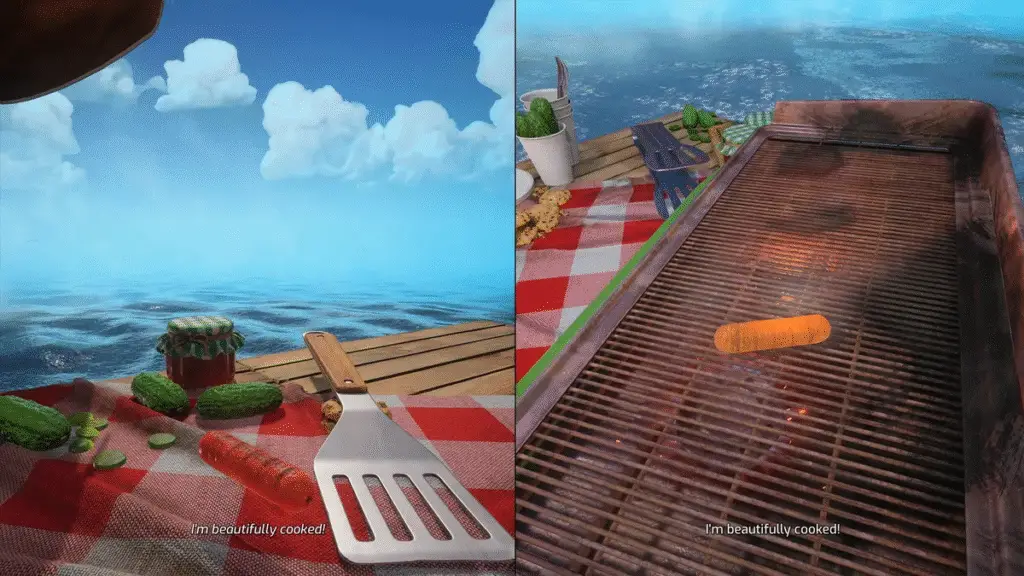Hazelight Studios’ Split Fiction is the spiritual successor to its 2021 co-op masterpiece It Takes Two, a game that redefined how narrative-driven multiplayer adventures could be experienced. After launching earlier this year on PS5, Xbox Series X|S, and PC, Split Fiction has now made its way to the Nintendo Switch 2—joining launch titles like Deltarune, Hitman World of Assassination, and Mario Kart World.
With an explosive, genre-hopping story and rich co-op mechanics, this port had huge potential. But does the Switch 2 version manage to retain the magic, or is it a compromised experience meant only for the most loyal handheld players?
After nearly 20 hours of gameplay, here’s our full review of Split Fiction on Nintendo’s newest hybrid console.
A Story That’s Literally Out of This World
The narrative begins at Rader Publishing, where writers Zoe and Mio arrive expecting their work to finally be published. Instead, they’re introduced to “The Machine”—a high-tech device capable of simulating entire fictional universes. What could go wrong?
A suspicious Mio ends up trapped in Zoe’s fantasy bubble simulation. When the two approach a mysterious “glitch,” they’re thrown into Mio’s sci-fi universe, setting off a chaotic journey through laser-filled arenas, enchanted forests, and more.
What follows is a buddy adventure that jumps between fantasy and science fiction, combining dragon-riding with cyberpunk dogfights. The constant back-and-forth mirrors the duo’s clashing personalities—Zoe’s optimism versus Mio’s cynicism—and forms the emotional heart of the game.
While the writing isn’t groundbreaking and some twists are predictable, the execution—especially the way environments visually interpret each character’s psyche—gives the story real weight. Like It Takes Two, Split Fiction blends emotional growth with co-op hijinks, offering both laughs and poignant moments.
Gameplay That Keeps You Guessing

Hazelight Studios has once again proved its mastery of genre-bending co-op mechanics. Each level introduces something new: one moment you’re solving magical puzzles in a fantasy realm, the next you’re firing laser cannons in a zero-gravity arena. Gameplay never sits still, and that’s part of its charm.
The Switch 2 version maintains all core mechanics found in other platforms:
- Puzzle-solving that demands cooperation
- Precision platforming with unique character abilities
- Action sequences including mech battles, stealth, and aerial combat
In short: this is still Split Fiction at its best—varied, engaging, and built for shared chaos. Whether you’re couch co-oping or playing online, the design encourages communication, timing, and laughs. It’s a brilliant reminder of why co-op games should never go out of style.
Visual Downgrades Are Impossible to Ignore

While the core gameplay shines, Split Fiction on Switch 2 is a noticeable visual downgrade from its PS5 and Xbox counterparts. This is especially apparent in the game’s opening scenes. The splash screen’s blacks look blocky, and shadow rendering issues are visible before you even start the game.
Key Visual Differences:
- Resolution & Framerate: Runs at 1080p/30fps on Switch 2, compared to 4K/60fps on PS5.
- Texture Detail: Character hair looks frayed; environments lack depth and polish.
- Shadow Flickering: Particularly bad in dark scenes and during quick character movement.
- Motion Blur: Fast character actions can cause distracting blur effects.
Cutscenes, while functional, don’t have the cinematic crispness of current-gen consoles. Zoe and Mio sometimes resemble cartoon cutouts rather than high-res models. It’s not game-breaking, but if you’ve seen the game elsewhere, the downgrade is glaring.
Tabletop Mode Struggles

One of the big selling points of Switch 2 is its hybrid nature. Play on the go, on your TV, or in Tabletop mode. While Split Fiction technically supports all three, Tabletop is the weakest of the lot.
In Tabletop mode:
- Split-screen becomes too cramped for two players to comfortably follow the action.
- Shadow-heavy environments make navigation difficult.
- Dark scenes become nearly unplayable, especially in outdoor lighting.
Even in a controlled indoor environment, visibility was a problem—let alone at an airport or on a train. You also need two sets of Joy-Con 2 controllers, which can be a pricey barrier if you’re planning local co-op on the move.
Sound Design Surprises
If there’s one area where the Switch 2 port holds up surprisingly well, it’s audio. Whether in Docked, Handheld, or Tabletop mode, the sound is clear, dynamic, and immersive. Dialogue is crisp, background music adjusts smoothly to emotional beats, and effects—from dragon roars to laser blasts—are satisfying and well-mixed.
It’s not the most revolutionary audio design, but it holds up across all gameplay modes, making for a consistently pleasant aural experience.
Co-op Options: Overwhelming and Confusing

Split Fiction leans heavily into its co-op roots, but the number of ways to play with others can be overwhelming—especially on the Switch 2. Here’s a breakdown:
Local Co-op
- Play Local: Couch co-op with two players on one console.
- Play Local Wireless: Connect with another Switch 2 nearby, but both players must own the game.
- GameShare (Local Wireless): One player streams the game locally to another Switch 2—no second copy needed, but both must be physically close.
Online Co-op
- Friend’s Pass: Invite a friend online who doesn’t own the game. They’ll need to download the free Friend’s Pass.
- Crossplay: Play with friends on PS5, Xbox Series X|S, or PC by connecting EA accounts.
The Catch:
- You can’t play online with someone using the original Nintendo Switch.
- You must own two sets of Joy-Con 2 controllers for any local multiplayer session.
While flexibility is great, the disjointed options and scattered menus make setup a chore. It’s far from intuitive, and Hazelight could have streamlined the UI to avoid confusion.
Friend’s Pass and GameChat: Strong Additions
Despite the convoluted setup, some features shine. The Friend’s Pass system is fantastic for getting new players involved, and the Switch 2’s GameChat feature adds an emotional layer by letting you see and hear your friend in real time.
It’s a social enhancement that makes puzzle-solving and character banter more fun—especially when navigating intense or hilarious moments. It adds personality to what could otherwise be standard online play.
Performance Verdict: Good, But Not Great
Let’s be clear: Split Fiction on Switch 2 is playable and enjoyable, but it’s also clearly compromised. If you haven’t seen the game on PS5 or PC, you might not notice some of the graphical hiccups. But seasoned players will see and feel the difference.
Pros:
- Fantastic co-op gameplay and level variety
- Unique, heartwarming story
- Brilliant audio and soundscape
- Crossplay and Friend’s Pass support
- Still fun in Docked and Handheld modes
Cons:
- Visual and performance drop from PS5/Xbox
- Shadow rendering and motion blur in darker areas
- Tabletop mode is borderline unplayable in some levels
- Confusing co-op options and menu layout
- Extra hardware required for local multiplayer
A Solid But Less-Than-Optimal Experience
Despite its inventive gameplay and emotional storytelling, Split Fiction on Nintendo Switch 2 is ultimately a mixed bag. While the game offers the same thrilling co-op fun as its next-gen counterparts, it comes with clear compromises in visual fidelity, frame rate, and local co-op ease.
Tabletop mode is a great idea on paper—imagine slaying dragons or launching into sci-fi chaos while waiting for a flight—but in practice, it’s hard to see what’s going on unless you’re in perfect conditions. TV mode remains the optimal way to experience Split Fiction on Switch 2, offering better visibility and less strain.
If you’re seeking a fully mobile-friendly version of the game, this port isn’t quite there. That said, if you’re okay with some visual downgrades and the occasional shadow glitch, the heart of the game—the characters, story, and gameplay variety—remains intact.
Should You Play Split Fiction on Switch 2?
✅ Play It If…
You want a full-fledged co-op adventure.
With around 15 hours of story, side quests, and varied missions, Split Fiction offers a rich, character-driven experience. At $50, it delivers solid value, especially for players who appreciate narrative depth and gameplay variety.
You crave gameplay variety.
From fantasy platforming to sci-fi shooting, no two levels feel alike. Mio and Zoe each unlock unique mechanics across levels, keeping the game fresh and engaging from start to finish.
You and your co-op partner enjoy different genres.
The split between sci-fi and fantasy is more than narrative—it’s gameplay philosophy. If your co-op buddy leans more toward action while you love puzzles and fantasy, this game accommodates both preferences without overcommitting to one.
You need a portable co-op fix.
While Tabletop mode isn’t perfect, the portability of the Switch 2 means spontaneous co-op sessions are still possible—just make sure you’ve packed a second controller.
❌ Don’t Play It If…
You don’t have a co-op partner.
There’s no solo mode. If you don’t have someone to play with—either online or locally—you’re out of luck. While the Friend’s Pass and GameShare help mitigate this, the game still requires two human players.
You care about top-tier visuals and frame rate.
If you’ve seen or played Split Fiction on PS5 or PC, the downgrade on Switch 2 is hard to ignore. From 4K/60fps down to 1080p/30fps, the experience feels less polished—especially in cutscenes and darker environments.
You only have one controller set.
Split Fiction doesn’t support playing with just one set of Joy-Con 2 controllers. If you want to play local co-op, you’ll need a second set—an added investment that may not feel worth it for casual players.
You’re buying for a younger audience.
Despite its cartoonish charm, Split Fiction contains swearing, innuendo, and intense scenes that make it unsuitable for kids. It’s rated PEGI 16 and ESRB Teen (13+), unlike It Takes Two, which is more kid-friendly.
Accessibility Features
Hazelight Studios continues to push inclusivity with Split Fiction. In the Accessibility menu, you’ll find:
- Input customization: Remap controls for both Mio and Zoe
- Simplified button prompts: Toggle hold vs. mash options
- Damage reduction: Lower enemy impact for less frustration
- Skip gameplay sections: If you’re stuck or need to skip a challenge
- Subtitles and closed captioning: Essential for clarity
- Camera adjustments and rumble settings
These options make Split Fiction more accessible to players with different needs and playstyles—a thoughtful inclusion in a game that’s built on teamwork.
How We Reviewed Split Fiction on Switch 2
This review is based on approximately 18 hours of gameplay across both the PS5 and Nintendo Switch 2. The full story was completed, along with all available side content.
- Local co-op was tested using a Nintendo Switch 2 Pro Controller and a pair of Joy-Con 2 controllers.
- Game modes tested: Docked mode on a Samsung Q80T QLED TV, Tabletop mode, and Handheld mode.
- GameShare functionality was tested using a Nintendo Switch Lite and confirmed working locally (but not online with original Switch).
- Crossplay was tested between Nintendo Switch 2 and PS5 and worked seamlessly.
- Online co-op using the Friend’s Pass was tested and successfully allowed play with users who don’t own the game.
The aim was to explore the full range of co-op setups available on the Switch 2 platform while directly comparing visual fidelity, responsiveness, and overall experience to that of the PS5.
Final Verdict: A Great Game Slightly Held Back
Split Fiction remains one of the best co-op games of 2025. It’s inventive, emotional, and packed with action. But the Nintendo Switch 2 version is a technical step down. While the story, gameplay mechanics, and overall fun are still present, the visual fidelity and performance issues are impossible to overlook.
If the Switch 2 is your only gaming platform, you’ll still get a solid and satisfying experience—especially if you plan to play in Docked mode. But if you have access to a PS5, Xbox Series X|S, or gaming PC, that’s where Split Fiction truly shines.

